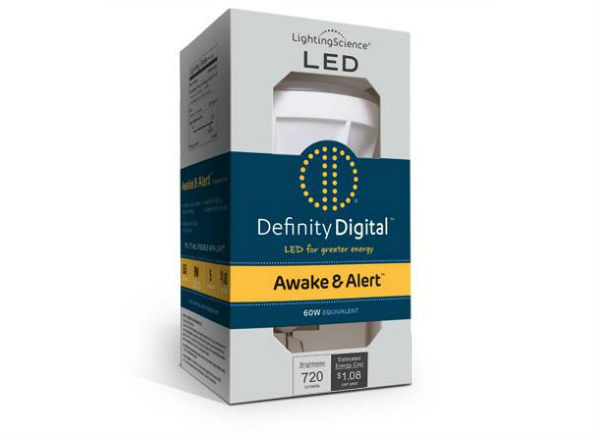LED Lightbulbs That Promise To Help You Sleep

The Definitely Digital Good Night LED and the Awake & Alert LED are used to help astronauts sleep or remain alert in space, claims Lighting Science, their manufacturer. Lighting Science LEDs were used in NASA ground-based studies, and the manufacturer helped to develop the LED lighting system scheduled for installation in the International Space Station in 2016, according to NASA’s Smith Johnston, M.D. But NASA won’t say which LEDs it actually uses in space.
[one_fourth]
As LEDs become commonplace, it helps to know that they give off more blue light than other types of bulbs, such as CFLs and incandescents, says Terry McGowan, director of engineering for the American Lighting Association, a trade group. CFLs emit some blue light and incandescents emit little, he adds. Consumer Reports found that the Good Night LED does have significantly lower blue-light levels than other LEDs.
And while you’re prepping yourself for dreamland, be sure to minimize your exposure to all sources of blue light, our health experts say. That includes powering off smart phones, TVs, and other electronics with a bright screen a few hours before turning in.
When you’re not trying to sleep, the Good Night—which can substitute for a 60-watt incandescent—casts a bright, warm light that the manufacturer claims will last 25,000 hours, or about 23 years when on for 3 hours per day.
Trying to wake up? The Awake & Alert LED, on the other hand, is claimed to have elevated levels of blue light, which our tests confirmed. The 65-watt BR30 replacement LED was almost as bright as stated but gave off a light that was a bit more bluish white than the box stated. Bluish light can be unflattering.
At $70 each, the price of these bulbs is certainly out of this world.





